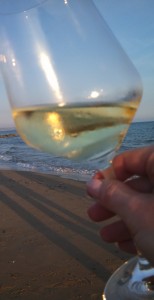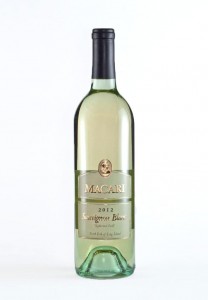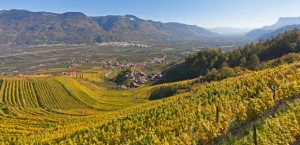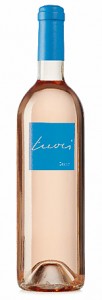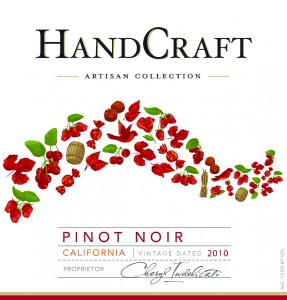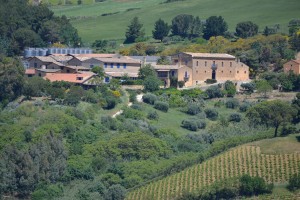 If a wine region can claim to have a first family in its midst, then no doubt the Tasca d’Almerita family would find itself among the top of Sicily’s list. In the 1830s, the two Tasca d’Almerita brothers bought the Regaleali estate, turned it into their home and launched the family business. But, it wasn’t until the 1950s that things began to really change. Choosing to become a pioneer in shifting the conversation about Sicilian wine from quantity to quality, it was Count Giuseppe Tasca d’Almerita who focused on improving Sicilian wine through experimentation in the winery and the vineyard.
If a wine region can claim to have a first family in its midst, then no doubt the Tasca d’Almerita family would find itself among the top of Sicily’s list. In the 1830s, the two Tasca d’Almerita brothers bought the Regaleali estate, turned it into their home and launched the family business. But, it wasn’t until the 1950s that things began to really change. Choosing to become a pioneer in shifting the conversation about Sicilian wine from quantity to quality, it was Count Giuseppe Tasca d’Almerita who focused on improving Sicilian wine through experimentation in the winery and the vineyard.
Among Giuseppe’s first successes was Bianco Regaleali, a white blend of Inzolia, Cataratto, Grecanico and Chardonnay, which sports an unusual bottle shape –similar to a flute d’Alsace – immediately becoming well recognized for its quality and establishing the Tasca d’Almerita’s reputation as producers of fine wine. This was joined by the Rosso del Conte – a special reserve of Regaleali Rosso, produced from 40 year old Nero d’Avola vines. His Nozze d’Oro was first crafted as a gift to his wife in honor of their 50th wedding anniversary – a true labor of love – blending Inzolia and Sauvignon Blanc. When the wine was met with such critical acclaim, he decided to continue to produce the wine beyond the anniversary celebration and it remains a company flagship.
Guiseppe’s son, Count Lucio, followed his lead, looking to plant vines at different and higher altitudes, where it was much cooler. Lucio was also the first to plant international varieties, namely Chardonnay and Cabernet Sauvignon, during the 1980s, a choice he initially hid from his dad. It wasn’t until the wines were crafted and bottled that he gave Giuseppe a taste, still not revealing their origin until after Giuseppe had offered his seal of approval. The Chardonnay made its debut in the family’s portfolio in 1985 and continues to garner high praise as does the Cabernet Sauvignon.
Today, while Count Lucio remains president of the family-run winery, his two sons, Giuseppe and Alberto, serve as vice president and managing director, respectively. When Giuseppe and Alberto joined the family business, Lucio made it clear that if they began to fight, he would immediately step in and tell them what to do. The threat seems to have worked since they continue to work in harmony to this day.
Regaleali now stretches over 500 hectares in the heart of Sicily and I reached the historic estate in the late afternoon, with time to rest before dinner. But, if I thought that the remote location would mean peace and quiet, I was sadly mistaken. A German restaurateur who is a client of Tasca d’Almerita had brought his all male group of friends to visit the winery, coincident with my stay. While I was warned that the group was there, it didn’t prepare me in the least.
The light teasing, which I could easily handle, began with the appetizers, eaten in the courtyard, while enjoying the Tasca d’Almerita Brut sparkler. Later, we moved indoors to escape the evening chill and bawdy jokes were told. But, like the appetizers, this, too, was only a taste of what was to come.
 The next incident involved a fox (no, really!). At some point, during the meal, Regaleali’s Hospitality Manager, Sasha Stancampiano, asked me if I wished to see a fox. A bit perplexed by the question, I followed him outside, where, to my surprise, a fox was hanging out in the courtyard. It turned out that the fox visits regularly and, given that they’ve taken to feeding her, I am sure she will return.
The next incident involved a fox (no, really!). At some point, during the meal, Regaleali’s Hospitality Manager, Sasha Stancampiano, asked me if I wished to see a fox. A bit perplexed by the question, I followed him outside, where, to my surprise, a fox was hanging out in the courtyard. It turned out that the fox visits regularly and, given that they’ve taken to feeding her, I am sure she will return.
After dinner (and many glasses of wine), the Germans began to sing. An impromptu game of Name That Tune was scrapped when the internet connection proved to be too slow to stream music on Yoni Annet Westerndorp (Brand Manager Europe)’s iPad, but the Germans continued to sing. Suddenly, there were four middle-aged German men belting out Bye, Bye Miss American Pie and dancing around the table. I wasn’t sure which was more surprising – their eagerness to sing or the fact that they even knew that particular song. Other songs and similar renditions followed (as did several more glasses of wine). I tried to decline at least a few glasses, but eventually gave up trying and simply took fewer and smaller sips. As midnight approached, it appeared that the dancing was about to shift from AROUND the table to ON the table, at which point Yoni, RossellaMarino Abate (an intern at Tasca d’Almerita) and I said goodnight to the gentlemen, half expecting to find them still there at breakfast, and headed off to our respective rooms.
After breakfast, which was blissfully song-free (save for the iPhone video of last night’s antics), winemaker Laura Orsi, who has been with Tasca d’Almerita since 2004, led me through a formal tasting. She shared that careful attention is paid to replanting the vineyards, with 15 hectares removed and replanted annually. However, she further emphasized the need to work well in the winery to maintain quality and included an analogy regarding zucchini. Unfortunately, as my notes simply read “zucchini example,” this wisdom is now lost to me.
Once the tasting was over, Yoni and Rossella provided me with a comprehensive tour of Regaleali, visiting a number of vineyards including the vines planted back in the 1950s. The self-sufficient estate also boasts one of Italy’s best culinary schools established by Count Lucio’s sister, Marchesa Anna Tasca Lanza and, during our brief visit to the school, we had the opportunity to sample some tuna sashimi.
Beyond Regaleali, the Tasca d’Almerita family owns Tenuta Capofaro on the Aeolian island of Salina, which is focused on Malvasia; the Tascante estate on Mount Etna, home to Nerello Mascalese and Nerello Cappuccio; and has expanded its production through joint ventures with the Whitaker Foundation in Mozia (close to Marsala) where they grow Grillo, and with Sallier de la Tour at Monreale, which is situated near Palermo and particularly suitable for Syrah, Cabernet Sauvignon and Petit Verdot.
I departed Villa Tasca and prepared for my final night in Palermo, where I had the pleasure of dining with Simona and Salvatore (yes, every other person seems to be named Sal) from Gran Via. They had been encouraging my use of Italian, but offered their assistance with the menu if I needed it. I spotted an interesting menu item and could translate all, but one, word in the dish description – fasolari – choosing to order it anyway. Once I was served, Salvatore pointed out the fasolari on my plate, which, at least to me, resembled a large clam. Since my dish already had small clams known as vongole in it, I borrowed the skills learned regarding suffixes (“-one” makes things bigger) to invent the word “vongolone,” which Simona and Salvatore found to be hilarious. Either way, dinner was delicious and I had a lot of fun before we walked back to my hotel and said goodbye. The next morning, I was off to the airport, where it was tears in place of last night’s laughter as I bid arrivederci to Sicily.

